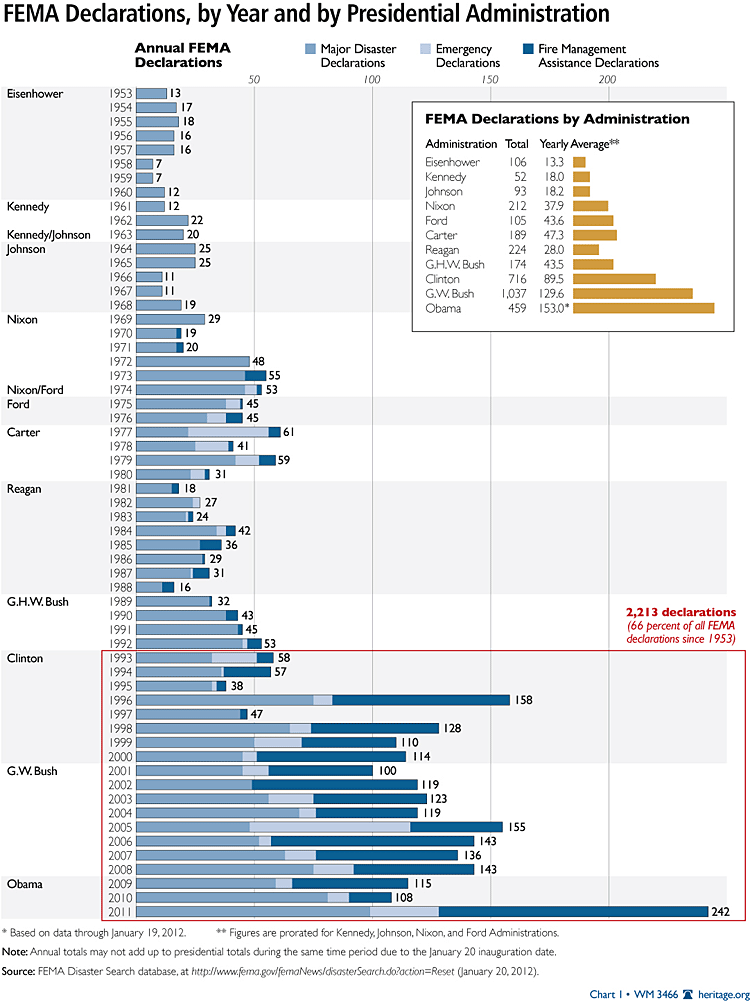Days before Hurricane Sandy slammed into the mid-Atlantic, the media hype was in full steam. While the potential dangers of any large storm should never be underestimated, we cannot allow sensationalism to pave the way for poor public policy.
It would be a mistake to expect the federal government - which is also shut down by the incoming storm - to respond effectively. As the Heritage Foundation explained in 2010, the federal government is overstretched:
"The Federal Emergency Management Agency has been responding to almost any natural disaster around the country, be it a contained three-county flood, or a catastrophe of near-epic proportions like Hurricane Katrina. As a result, many states and localities have trimmed their own emergency-response budgets, often leaving them ill prepared to handle even rain- or snowstorms without federal assistance. This leaves FEMA stretched far too thin and ill prepared to respond to grand-scale catastrophes. The "federalization of disasters" misdirects vital resources, leaving localities, states, and the federal government in a lose-lose situation. FEMA policies must be overhauled to let localities handle smaller, localized disasters, and to allow FEMA to respond fully and effectively when it is truly needed. If the status quo continues, it will be a disaster for everyone."
How thin is FEMA stretched? According to Heritage, during the first nine months of 2011, the agency "issued 222 declarations, which is a single-year record and a 41 percent increase over the previous record of 157 declarations set in 1996, when President Bill Clinton was running for reelection."
Not only do disaster declarations appear to increase during Presidential election years, as the chart below demonstrates, but there is also a steady increase in declarations across the board.
[caption id="" align="aligncenter" width="668"] Heritage: Disaster Declarations Increase[/caption]
Heritage: Disaster Declarations Increase[/caption]
For some perspective:
"Hurricane Irene-barely a Category 1 hurricane when it finally struck the U.S. -resulted in Major Disaster Declarations for 12 states, largely for flooding. In sharp contrast, just six years ago, Hurricane Katrina - America's costliest disaster by tens of billions of dollars, with more than 60,000 square miles impacted -resulted in just four states receiving Major Disaster Declarations."
Although it is far too early to tell how Hurricane Sandy will compare, we do know the federal government is "defining disaster down." They also are making the trend harder to track. Earlier this year, Heritage discovered the agency "altered its website to prevent date-based searches of disaster declarations." In the midst of a storm, reducing transparency does not inspire confidence.
Read more: Principles for Reform of Catastrophic Natural Disaster Insurance